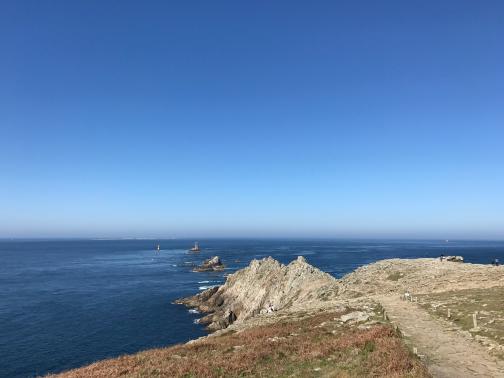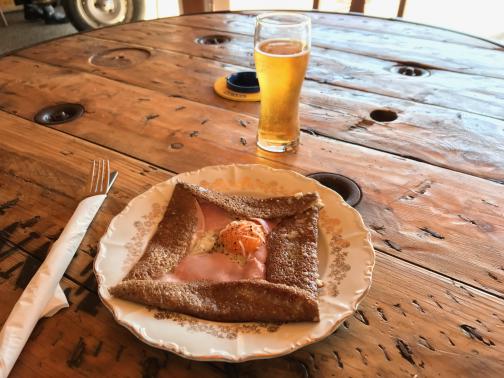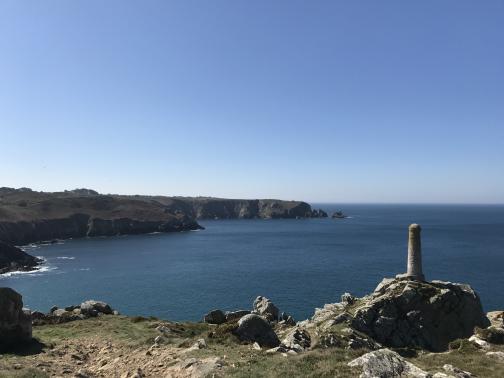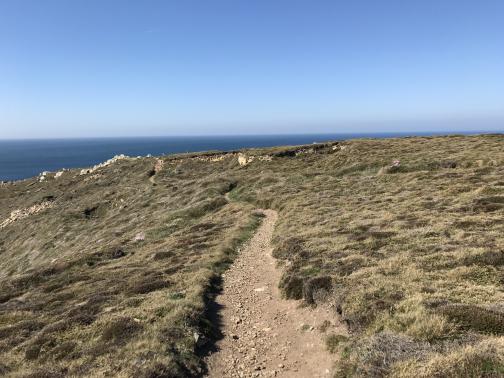pile.org
2017 E5 walk, day 1: Pointe du Raz to Trouérennec
48°2′21.2″N
48°3′58.3″N
I broke camp and headed out the Rue des Langoustiers (roughly “Lobstermen’s Road”) to the Pointe du Raz, the westernmost tip of France and the “official” start of my walk.

The Pointe du Raz is fittingly rugged for the end of the world (the départment is named Finistère, as in the end of the earth). At one time, this was a blighted, over-touristed site, but it’s been scaled back, and of course I was walking through off-season. The only thing open was a single crêperie (playing some song I didn’t recognize1 by Dire Straits, or perhaps a solo Mark Knopfler), and I had an early lunch, what would prove very typical of my time in Brittany: a galette complête (buckwheat crêpe with ham, cheese, and egg) and a Breton cider.2

I struck out on the GR 34 along the coast, sweeping north past a deserted, touristy-looking beach (presumably busy in the summer). At the far side of the beach, I climbed up into the terrain of my next few days: rugged cliffs, dropping and climbing relentlessly. The trail was narrow and rutted, with little elevated parallel trails beaten where the main trail would have gotten swampy or marshy in rainy weather.
(In hindsight, I was very lucky with the weather: Some of the drops to the ocean were as sharp as the rocks below, and if the path had been slippery, my broken body might still be lying down there.)


I made it almost as far as the Pointe de Penharn, at which point I struck inland towards Camping de Keringard, the only option I could find anywhere near the area.3 It was a couple miles away, farther than I preferred to venture from the trail — and if my goal were only to get from one end of the trail to the other, it would have been far faster to just walk straight from Plogoff to Keringard, rather than around the cape. I made it before dusk this time, still the only person camping. Like the previous night, I strolled in to the local village, Cléden-cap-Sizun, before going to sleep.

-
Update, Feb. 2023: Almost six years after the walk, and two years after writing this, I went back and checked my Shazam history. The song was “Done with Bonaparte” by Mark Knopfler, from 1996. ↩︎
-
Breton cider is nothing like most ciders found in the United States. For starters, it’s not nearly as sweet. More subtly, its carbonation is coarser than American ciders, bubbles more the size of those in soda pop than in champagne. I grew quite fond of it. The only one I’ve found around here is Cidre le Brun, which is sold at the Shoreline Central Market. ↩︎
-
There was always the option of camping sauvage, in the wild, but I couldn’t find a straight answer about whether or not it was legal, so I preferred to avoid doing that if possible. ↩︎